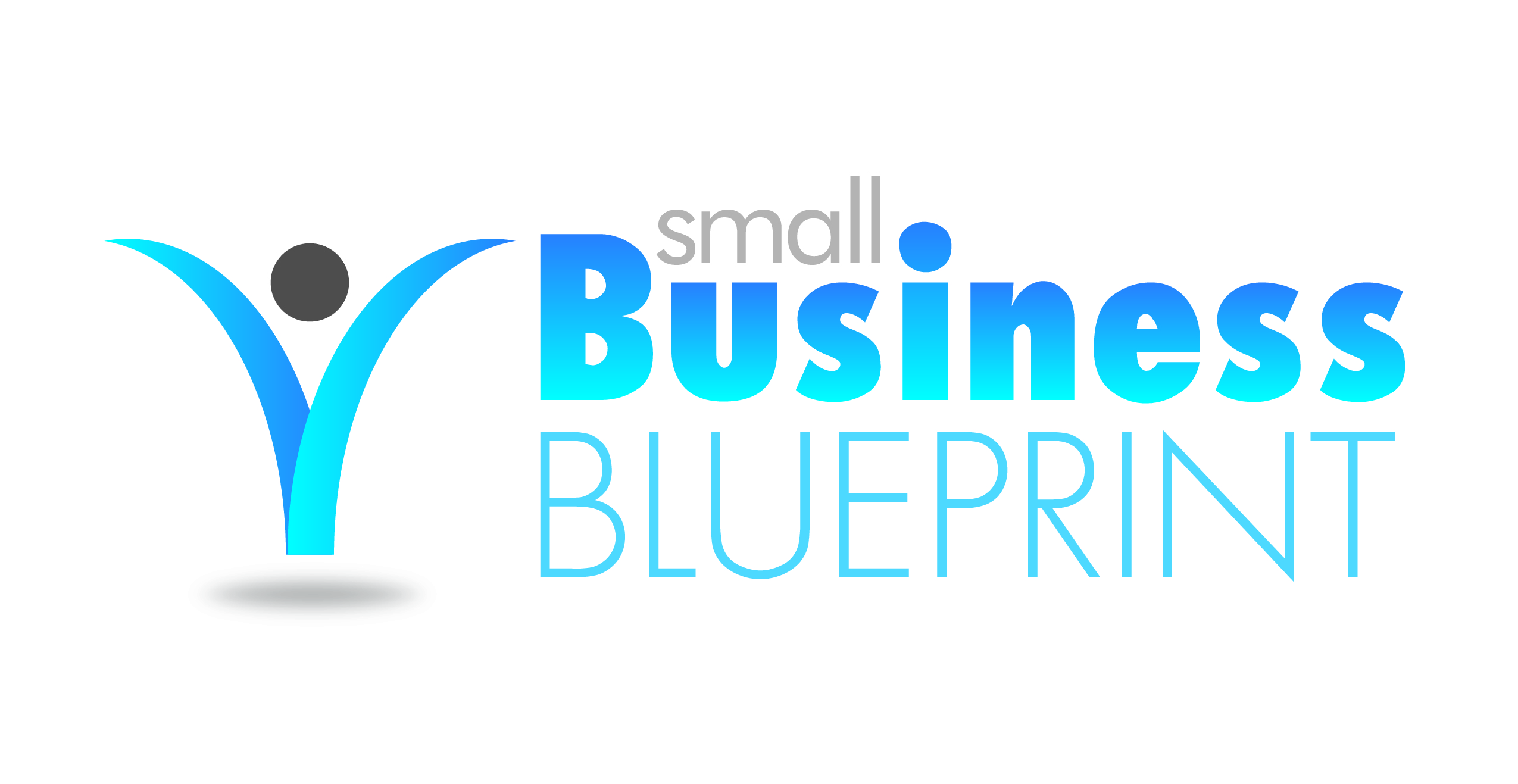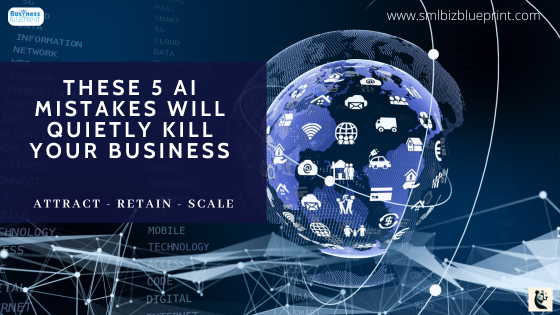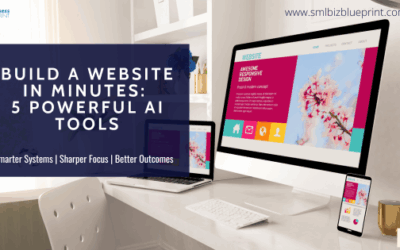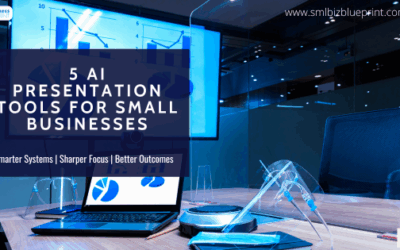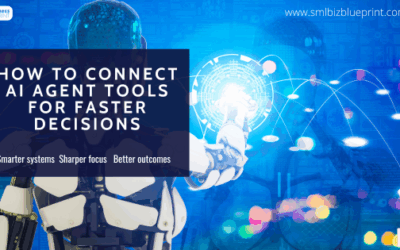Most small business owners aren’t ignoring AI—they’re using it the wrong way. And it’s quietly killing their productivity and profit.
You’re not falling behind because you’re ignoring AI. You’re falling behind because you’re implementing it without a clear business strategy.
AI has exploded into the business world, promising speed, automation, and scalable growth. And if you’re like most small business owners, you’ve already tested tools like ChatGPT, Jasper, or Zapier.
Maybe you’ve automated a few processes, outsourced some content writing, or tried to streamline customer follow-ups.
But here’s the catch: you’re working harder and seeing little progress.
That’s not an AI problem. That’s a strategy problem.
In this article, we’ll break down the 5 most common AI mistakes that are quietly draining your time, eroding your profit, and stalling your momentum.
These are the blind spots that keep businesses stuck in experimentation mode instead of building real, revenue-generating systems.
We’ll show you what each mistake looks like, what it’s costing you, and—most importantly—how to fix it.
Whether you’re just getting started or already knee-deep in AI tools, this post will help you stop spinning your wheels and start building smart, scalable systems that drive real outcomes.
Let’s get into it.

Mistake 1: Using AI Without a Clear Use Case
“Let’s try this AI tool and see what happens.”
That’s how most small businesses begin their journey with AI—and it’s precisely why their results are underwhelming.
The first and most damaging mistake? Diving into AI without a clearly defined business use case.
Too many business owners experiment with tools like ChatGPT, Midjourney, or Zapier, hoping something will click.
What actually happens is a lot of tinkering, followed by confusion, wasted time, and zero ROI.
❌ What Happens Without a Clear Use Case:
You bounce between platforms, unsure what success even looks like.
Projects stall because you’re unclear on how AI connects to your goals.
Your team loses faith in AI because nothing sticks.
You hear about a new AI tool in a podcast, test it for a few hours, then shelve it—again. A week later, another tool. Still no impact. You’re spending time, not solving problems.
Then it clicks: the tool doesn’t matter if you don’t know what you want from it. Once the focus shifted to “boosting weekly sales leads,” every decision became simpler—and actionable.
✅ What You Should Do Instead:
Start with the business goal, not the tool.
AI should be used to solve a real, measurable problem:
Are you struggling with lead generation?
Is content creation draining your time?
Are follow-ups inconsistent or missed entirely?
Once you clarify your desired outcome, selecting the right AI tool becomes a strategic decision, not a guessing game.
79% of businesses using AI report productivity gains—but only 15% report measurable revenue growth
— McKinsey & Company, 2023
That gap? It’s caused by implementing AI with no strategic use case.
💡 Pro Tip:
When evaluating new AI tools, ask:
“What’s the problem I want this tool to solve—and how will I measure success?”
If you can’t answer that, you’re not ready to implement it.
Stay ahead of the curve!
Subscribe to our newsletter and never miss the latest in business growth and marketing strategies
Mistake 2: Confusing Tools with Systems
Buying more AI tools won’t fix a broken system.
You don’t need another app. You need a system that delivers outcomes.
Many small business owners mistake activity for progress. They set up AI tools that produce content, automate tasks, or summarise data—but those outputs rarely connect to revenue, time savings, or improved customer experiences.
The issue? Tools generate outputs. Systems generate outcomes.
❌ What Happens When You Rely on Tools Alone:
You end up with isolated “islands” of automation that don’t talk to each other.
You get content, but no conversions. Reports—but no decisions.
It’s difficult to scale because everything requires manual oversight.
AI isn’t meant to be another dashboard. It’s meant to be embedded in a flow, from idea to execution to outcome.
What You Should Do Instead:
Build an end-to-end system.
An effective AI system connects:
A clearly defined input (e.g., customer lead form)
An intelligent process (e.g., AI scoring leads, generating follow-ups)
An integrated output (e.g., emails sent, deals closed, meetings booked)
The operations manager built three automations: a chatbot, a reporting dashboard, and an internal reminder system. Each worked fine—individually. But none connected to actual revenue, and no one had time to monitor them.
They weren’t building a machine—they were assembling disconnected parts. Once they stepped back and mapped a real system from lead to sale, results started compounding.
Here’s what that might look like in real business terms:
A lead enters your website and completes a form.
AI instantly scores the lead’s intent and segments it.
Automated email copy (written by ChatGPT) is sent via your CRM.
If no response, AI triggers a follow-up text via Twilio on Day 3.
All activity is tracked in your dashboard for real-time decision-making.
That’s a system. And systems scale.
Automated systems increase sales productivity by 14.5% and reduce marketing overhead by 12.2%.
— HubSpot, 2024
💡 Pro Tip:
Before adopting any new AI tool, ask:
“Where does this fit in my workflow—and how does it drive a result?”
If it doesn’t plug into an outcome, it doesn’t belong.
Mistake 3: Automating the Wrong Tasks
Not everything should be automated.
This might sound counterintuitive in the age of AI—but automating the wrong things can actually waste time, not save it.
Too often, business owners fall into the trap of automating tasks just because they can, not because they should. This usually happens when the allure of “saving time” blinds them to whether the automated task is actually high impact.
The result? Lots of activity… and very little progress.
❌ What Happens When You Automate the Wrong Tasks:
You save time on low-impact work (like formatting internal docs) while high-impact work (like sales follow-ups) is still neglected.
Your energy goes toward refining automations instead of driving results.
You optimise for efficiency, not effectiveness.
AI isn’t just about speed. It’s about strategic leverage.
✅ What You Should Do Instead:
Automate where it matters most: revenue, customer experience, and decision-making.
Start by asking:
“If this task were done 10x faster or 10x better—would it move the business forward?”
If the answer is no, it doesn’t belong on your automation roadmap.
Focus AI on:
Sales & Marketing: Email sequences, ad copy generation, landing page testing
Customer Service: Chatbots, ticket triage, follow-up responses
Decision Support: Dashboards, analytics summaries, lead scoring
Avoid AI for:
Organising folders
Writing job descriptions for roles you’re not hiring.
Automating tasks you rarely do
Businesses that prioritise automating high-leverage tasks outperform their peers by 30% in revenue per employee.
— Harvard Business Review
💡 Pro Tip:
Create a simple matrix:
Column A: Task
Column B: Frequency
Column C: Revenue Impact
Column D: Time Spent
Automate what’s frequent + high impact. Eliminate or delegate the rest.

Mistake 4: No Measurement or ROI Framework
You can’t scale what you don’t measure.
One of business’s most common and costly AI mistakes is failing to track whether your efforts deliver real results.
Most business owners start using AI and see a flurry of output—more content, quicker responses, prettier dashboards—but have no idea if it’s translating into revenue, leads, or saved hours.
Without a feedback loop, your AI implementation is guesswork.
❌ What Happens When You Don’t Track ROI:
You make decisions based on “gut feel” instead of data.
You miss opportunities to double down on what’s working.
You waste time optimising automations that have no measurable benefit.
Your team loses clarity and motivation because wins aren’t visible.
✅ What You Should Do Instead:
Establish a simple ROI framework before implementing AI.
Start by asking:
What will success look like for this AI initiative?
How will we know if it’s working?
How will we measure time saved, revenue generated, or customer experience improved?
Use metrics like:
💼 Leads generated per campaign
⏱️ Hours saved per week
💸 Revenue per automation
📈 Conversion rates before/after AI use
🧠 Speed of decision-making or reporting cycles
Create a weekly or monthly scorecard that tracks:
Input (task or tool implemented)
Output (volume or activity)
Outcome (business result)
💡 Pro Tip:
Use a simple scorecard formula:
AI Initiative → Time Saved → Business Output → Financial ROI
Even rough data is better than no data. Without it, you’re flying blind.
Mistake 5: Waiting for the “Perfect Time” to Start
Perfection is the enemy of progress, especially with AI.
If you’ve been waiting for things to “settle down,” the right tool to appear, or your team to be more prepared… you’re already behind.
Many small business owners delay implementing AI because they don’t have the time, skills, or strategy. But here’s the truth: waiting for perfect conditions is the most expensive decision you can make.
AI isn’t a project you launch once.
It’s a capability you build over time—and the earlier you start, the sooner you learn, adapt, and scale.
❌ What Happens When You Wait:
Competitors who start earlier gain a learning curve and a first-mover advantage.
Your team continues working harder, not smarter.
You fall into decision paralysis, missing easy wins.
Fear of the unknown keeps you stuck in manual, inefficient systems.
✅ What You Should Do Instead:
Start small. Start now.
You don’t need to overhaul your business overnight. You need a low-friction starting point:
Automate one follow-up sequence.
Use AI to write your next blog post.
Build a basic dashboard to track leads.
Try a single AI agent to handle routine queries.
Momentum matters more than mastery. The businesses winning with AI didn’t wait for perfection—they iterated their way there.
She kept saying, “We’ll do AI after this quarter, when we’re less slammed.” But each quarter brought new fires. Meanwhile, a competitor who started with one chatbot and a basic CRM integration began dominating her niche.
It wasn’t that the competitor had more time. They just stopped waiting—and started building momentum with small wins.
💡 Pro Tip:
Start with the lowest-risk, highest-return task—usually in sales or marketing—build momentum, and then expand strategically.
There’s never a perfect time. But there is a right time: now.
Hungry for more insights?
Subscribe to Pulse and get cutting-edge marketing and business strategies delivered right to your inbox!”
Subscribe to Pulse Now
Conclusion
If you’ve been using AI and wondering why the results feel underwhelming, now you know why. It’s not about using AI—it’s about how you’re using it.
Let’s recap the five mistakes holding most small businesses back:
- Using AI Without a Clear Use Case – If it’s not tied to a real goal, it’s just noise.
- Confusing Tools with Systems – Tools are great, but systems are what scale.
- Automating the Wrong Tasks – Focus on what actually drives revenue and saves time.
- No Measurement or ROI Framework – What gets measured gets improved.
- Waiting for the Perfect Time to Start – The perfect time is a myth. Start lean. Learn fast. Build momentum.
Each of these mistakes is fixable. But left unchecked, they’ll quietly drain your time, flatten your profit margins, and keep your business in “tinkering mode” instead of scaling mode.
Your Next Step: Move from Experimentation to Execution
AI can transform your business—but not if you’re stuck testing tools without direction.
You don’t need another app. You need a system that saves time, boosts revenue, and runs reliably without constant attention.
That’s what we help small business owners build.
Action Steps: How to Avoid the 5 AI Mistakes and Build Smart, Scalable Systems
Identify a High-Impact Use Case
Don’t start with the tool—start with the problem.
Choose one business area where AI can save time, improve performance, or increase revenue (e.g. lead generation, customer support, or content production).
Ask: What’s the one task I’d delegate immediately if I could?
Map a Simple AI Workflow
Avoid isolated tools. Build a workflow that connects inputs, processes, and outcomes.
Even something as simple as “AI-generated email → CRM → follow-up sequence” is more powerful than five disconnected apps.
Tip: Connect your stack using tools like Zapier, Make, or Notion AI.
Prioritise High-Leverage Automation
Focus on tasks that either:
Bring in revenue (sales emails, ads, upsells)
Improve customer experience (chatbots, onboarding emails)
Free up strategic time (reporting, scheduling, analytics)
Avoid automating admin work that doesn’t move the needle.
Set ROI Metrics from Day One
Track results with a basic scorecard:
Hours saved
Leads generated
Emails opened
Sales influenced
Even simple tracking gives clarity on what’s working and what to improve.
Framework: Input → Output → Business Result
Launch Fast—Then Optimise
There’s no perfect time to start. Pick one initiative and launch it.
Test → Learn → Improve. That momentum will drive confidence and clarity.
Example: Automate your next 3 follow-up emails with AI this week.
Build Toward Systems, Not Stacks
Long-term success comes from building integrated systems, not bouncing between trendy tools.
Think of AI as an engine powering your operations, not a quick fix.
Goal: One system that saves time, earns money, and runs without daily oversight.
FAQs
Q1: What’s the biggest mistake small businesses make when using AI?
A1: The most common mistake is using AI without a clear business use case. Many small businesses jump into tools without defining a problem they want to solve, leading to wasted time and no measurable results.
Q2: How do I know if I’m using the wrong AI tools?
A2: If your AI tools aren’t directly tied to revenue, time saved, or improved customer experience, they may not be the right fit. Tools should be part of a system, not standalone apps that create more complexity.
Q3: What should I automate first in my business using AI?
A3: Start with tasks that are high-impact and repeatable. Lead generation, email marketing, follow-up sequences, customer inquiries, and sales reporting are great places to begin.
Q4: How can I measure the ROI of AI in my business?
A4: Use a simple scorecard to track time saved, leads generated, revenue influenced, and process improvements. ROI should always be linked to business outcomes, not just activity or output.
Q5: I’m not ready to fully adopt AI—where should I start?
A5: You don’t need to go all-in. Start lean by automating a single task (like scheduling, follow-ups, or content generation) and build momentum from there. It’s about progress, not perfection.
Q6: What’s the difference between using AI tools and building AI systems?
A6: AI tools perform isolated tasks. AI systems connect those tasks into a workflow that delivers business outcomes—such as turning content into leads or inquiries into sales. Systems scale. Tools alone don’t.
Q7: How fast can I expect to see results from using AI the right way?
A7: With a clear use case and simple implementation, many businesses see early wins (like saved time or more leads) in as little as 2–4 weeks. Sustainable growth comes from refining and scaling those wins.
Other Articles
AI Lead Generation System: 5 Steps to Automate Client Growth
5 Alarming Digital Advertising Trends Every Small Business Must Face in 2025
How To Use AI to Improve Product-Market Fit Faster and Smarter
